Even with DrectX12, we probably can't expect any miracles after the results we have just seen. If a driver bang gives a real boost, then the difference between DirectX11 and Directx12 performance could be added as a kind of offset. Had, could, would… No we do not (yet) know it and therefore state the actual state of affairs. We cannot do more than that.
DirectX 12 with "Tom Clancy's The Division"
It's not the wisdom of last resort, but it's still better than Hitman or Raise of the Tomb Raider. After all, the Radeon Vega FE can barely leave the GeForce GTX 1080 behind in the FPS. However, the backlog of the GeForce GTX 1080 Ti is a good 22%. If you could now press the actual clock from 1269 MHz to a constant 1600 MHz (however), then the Radeon Vega FE would even be very close to the front. But this beat, at least with our version and its cooling, is an illusion. No matter, because it shows at least once the way.
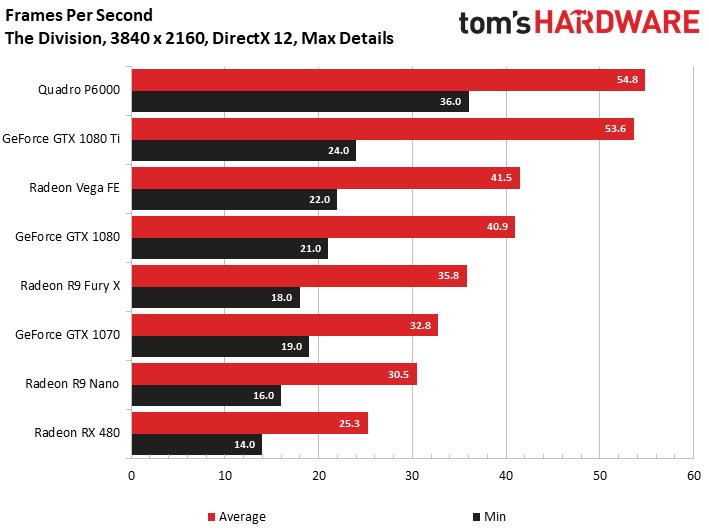
Next, we are interested in the corresponding FPS curve over the course of the entire benchmark run:
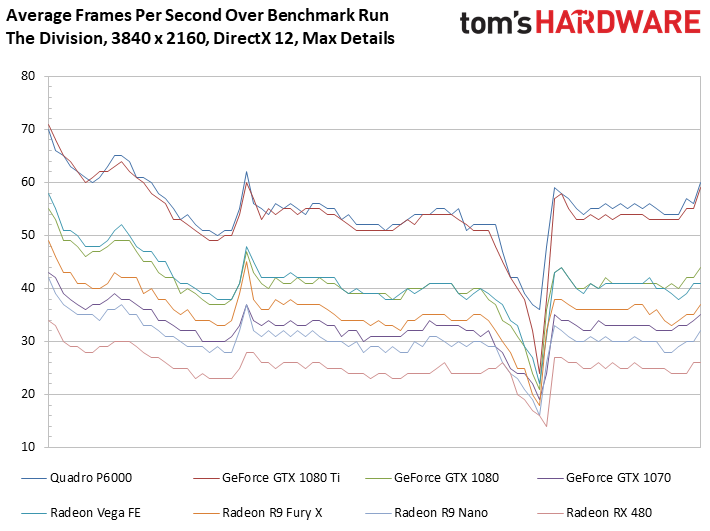
Of course, the pure frame times are also an important part of the consideration. That's why we compare all maps as both curve and bar charts. However, we can already see from the curves that apart from the rendering time, the spikes are very similar for all tested maps:
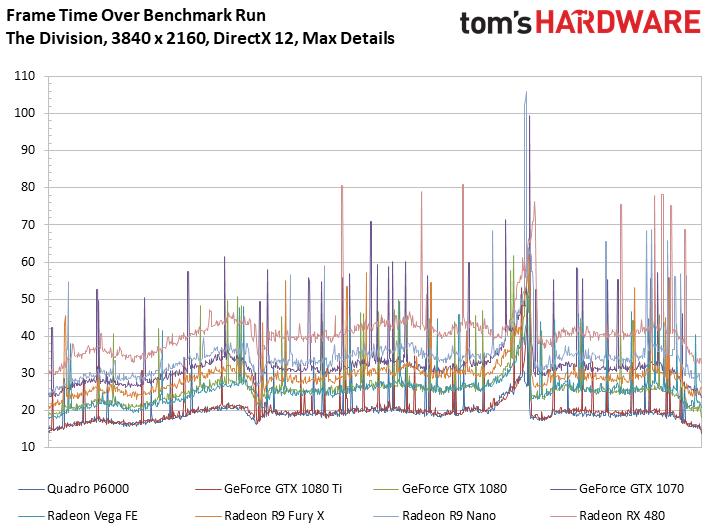
We also use the bars to see the percentage of the different length render intervals. Although the GeForce GTX 1080 has a slightly higher proportion of intervals between 16.2 and 22.2 ms, it is significantly weaker in the range below 22.2 ms and slightly more strongly in the range above 33.3 ms. So here the point goes to the Radeon Vega FE.
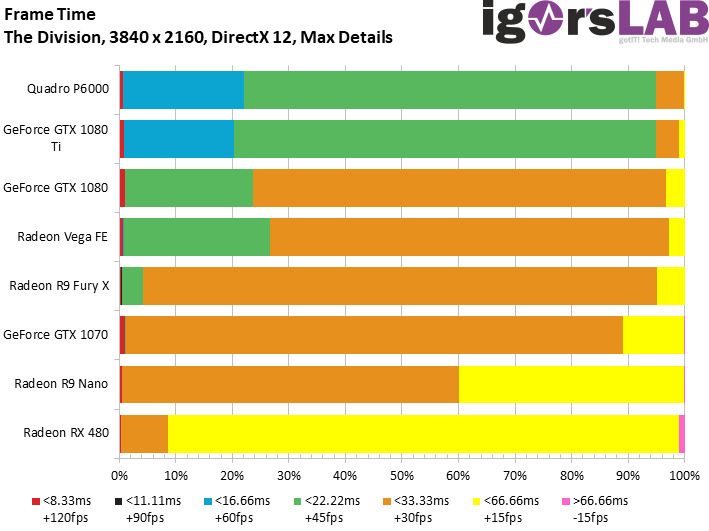
This is exactly what we find in the Frametime variances, where the GeForce GTX 1080 also draws the shortest, albeit only narrowly:
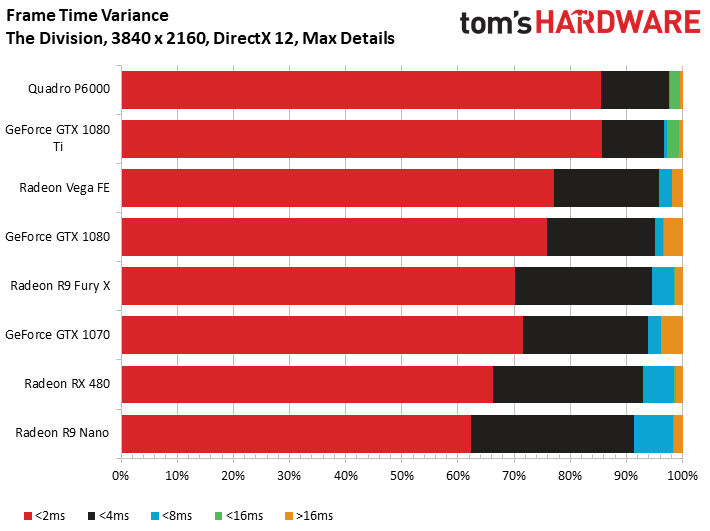
In the Unevenness index, the GeForce GTX 1080 is again a tiny touch in front, which may be surprising in the bare bar graphics. Let's leave that first …
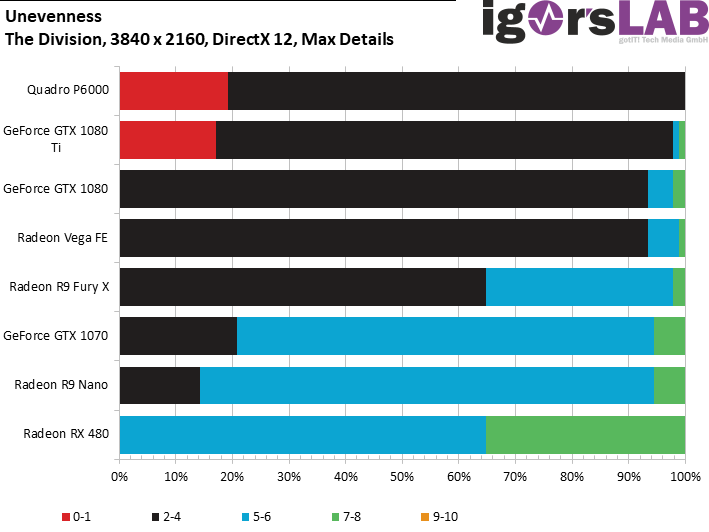
.. to give us a more accurate picture of why in the respective individual graphics:
They are small things, but the change between the individual "speed levels" takes place in more places with the Radeon Vega FE than with the GeForce GTX 1080, which subjectively influences the impression a little bit. Experienced players will also feel such transitions, which can be identified in addition to the normal, short-term micro-ruckers. Whining at a higher level, but also not at the highest level.
Intermediate conclusion
As usual: for the time being none.
- 1 - Einführung und Übersicht
- 2 - Details zu Architektur und HBM2-Speicher
- 3 - Demontage, Kühler und Interposer-Details
- 4 - Platinendesign und Detailinformationen
- 5 - Benchmark-Intro, 2D-Troughput und -Performance
- 6 - 3D Workstation- und Design-Benchmarks
- 7 - Gaming-Performance: DirectX 11
- 8 - Gaming-Performance: DirectX12
- 9 - Gaming-Performance: Vulkan/OpenGL 4.5
- 10 - Leistungsaufnahme im Detail
- 11 - Takt, Temperaturen und Geräuschemission
- 12 - Zusammenfassung und Fazit
































Kommentieren